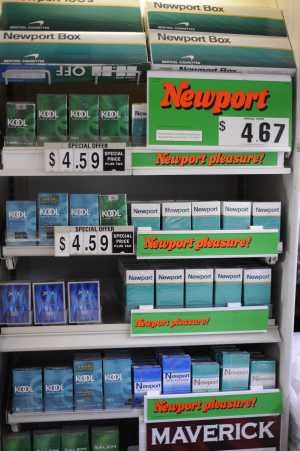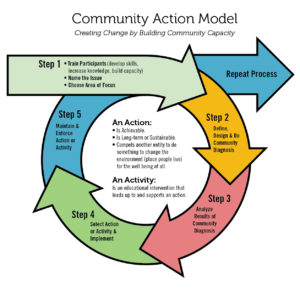San Francisco Restriction on the Sale of Menthol and All Other Flavored Tobacco Products
What is the policy?
 The San Francisco policy restricts the sale of menthol tobacco products and all other flavored tobacco products anywhere within the city of San Francisco, without exemption.
The San Francisco policy restricts the sale of menthol tobacco products and all other flavored tobacco products anywhere within the city of San Francisco, without exemption.
How did it happen?
After many years of footwork, on April 18, 2017, San Francisco City Supervisor Malia Cohen announced a proposed ordinance that would restrict the sale of any flavored tobacco product, including menthol, within the city limits. Very shortly after, the neighboring city of Oakland proposed a similar ordinance.
San Francisco policy makers and many residents feel the ordinance is necessary due to the clearly documented impacts of flavored (including menthol) tobacco products on youth initiation to tobacco use and because of the well documented disparities in menthol tobacco use for LGBTQ, Black, and Asian/Pacific Islander (API) due to the tobacco industry’s targeted marketing.
A history of targeted marketing
The history of marginalized communities in San Francisco being targeted by the industry is often exemplified by the industry’s Project SCUM (Sub Culture Urban Marketing). Project SCUM focused on targeting San Francisco’s LGBTQ and homeless populations with tobacco advertisement content and location. Being able to specifically name San Francisco as a victim for targeted advertising was a strength of the campaign to pass the ordinance. This targeting of particular communities is an issue across the US, with well documented impacts of higher smoking rates within the targeted communities. You can read more about disparities in tobacco advertising here.
Forming a Coalition
Concern about health disparities caused by increased smoking in tobacco industry targeted communities and an interest in preventing youth tobacco use initiation began the grassroots effort to restrict access to menthol and flavored tobacco products within the city limits.
A coalition of San Francisco residents and community organizations including the San Francisco Department of Health, Breathe California, African-American Tobacco Control Leadership Council (AATCLC), California LGBTQ Tobacco Partnership, and University of San Francisco’s cancer program collectively decided to focus funds and hours on engaging the community around the issue of menthol and developing the ordinance’s concise language.
Community Engagement
 The coalition’s first move was to engage the community with education around the dangers of menthol with the intention of gaining letters of support. They reached out to local community based organizations (CBO) offering information, data, and talking points for direct service providers to share with their participants. The coalition also is continuing to hold meetings within Black and API communities to discuss the harms of menthol and targeted advertising within these communities and what should be done. They later expanded these meetings to more impacted communities, with the goal of a well-informed community backing the policy when voting (see more below).
The coalition’s first move was to engage the community with education around the dangers of menthol with the intention of gaining letters of support. They reached out to local community based organizations (CBO) offering information, data, and talking points for direct service providers to share with their participants. The coalition also is continuing to hold meetings within Black and API communities to discuss the harms of menthol and targeted advertising within these communities and what should be done. They later expanded these meetings to more impacted communities, with the goal of a well-informed community backing the policy when voting (see more below).
Using the Community Action Model (CAM), the coalition continues working with youth programs in Bay View, the Tenderloin, and the Mission (historically Black, Latino, and API neighborhoods within the city) to further engage the community through surveys, assessments, data analysis, and talking points. This engagement began before the passing of the ordinance and continues as a means of supporting youth and community education on tobacco. Breathe CA began working with youth by engaging youth-focused CBOs that were already working with Breathe CA, and talked to the youth about the ease of access to tobacco products, product use, and flavors, and offered infographics. Breathe CA also has a media campaign and regularly works to engage the larger local community. Framing the campaign outreach messaging as a social justice issue and as avoidable has helped build community support over time.
Writing the ordinance
When deciding how to write the ordinance, the coalition and supporting policy makers made several decisions based off lessons learned from Chicago’s menthol restriction policy, which restricted the sale of menthol and other flavored tobacco products within a buffer zone around all K-12 schools. However, after the city passed Tobacco 21, the menthol restriction was partially rolled back, leaving the buffer zone only around high schools, not grade schools.
The key to success, San Francisco decided, would be simplicity. The language of the San Francisco’s policy is very straightforward and does not include any exceptions. In addition, San Francisco’s policy only prohibits the sale of menthol tobacco products, not the purchase, use, or possession. While tobacco retailers are the face of the opposition to the ordinance, stakeholders engaged in policymaking that impacts retailers have noted that small, local retailers prefer policies impacting their stores to be simple, fair, and consistent, not based upon locations or buffer zones, which is perceived as benefit to some stores over others. Concise policy language is also often more legally defensible, easier to message, and would ideally prevent some of the complications around framing and buffer zones that occurred with Chicago’s model policy. Much of the framing around Chicago’s policy had focused on the influence of menthol and other flavors on youth initiation, whereas the campaign for San Francisco’s policy focused more on social justice.
What happened?
The San Francisco City Council and Health Committees unanimously passed the menthol restriction ordinance in June 2017, and it was approved by Mayor Ed Lee. Implementation was originally set for January 1, 2018, but was pushed back to April 2018 as a consideration for store owners who would need time to transition, as well as giving the city time to consider ways to assist retailers through programs like Healthy Retail SF. The tobacco industry very quickly moved to stop implementation by collecting signatures. The tobacco industry paid $5 per signature for over 5,000 signatures to force the ordinance restricting the sale of their deadly products into referendum. Despite R.J. Reynolds spending nearly $12 million on campaigns against the ordinance, the established coalition continued to engage the community and work towards a positive outcome for the San Francisco menthol restriction ordinance. On June 5, 2018, San Francisco residents voted 68% to 31% to uphold the policy.


